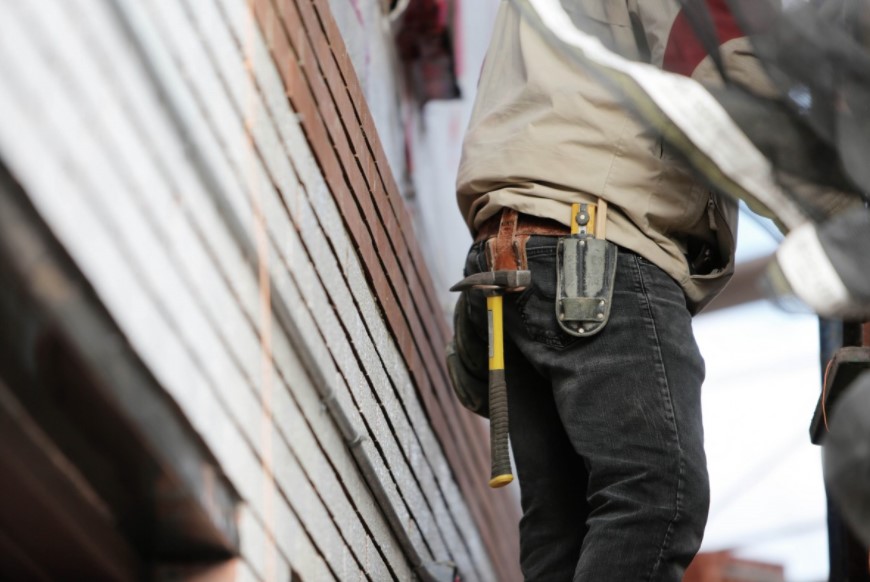Working with maintenance contractors
Contents |
[edit] Introduction
Maintenance is the process of ensuring that assets retain a good appearance and operate at optimum efficiency. Building maintenance can be carried out by outsourcing or by using in-house teams, but generally, maintenance operations use a mix-and-match of service delivery mechanisms.
Modern buildings are generally quite complicated and require a range of expertise to operate and maintain. They may involve complex electrical, IT, plumbing and mechanical equipment. It is therefore be to the benefit of everyone directly involved with a building’s use that decisions regarding maintenance are put in place as soon as possible.
Common maintenance tasks may include:
- Carpentry.
- Lighting repairs.
- Pointing and plaster repairs.
- Plumbing.
- Landscaping and gardening.
- Building services and other equipment.
- Window and door repairs.
- Debris/rubbish removal and clearance.
- Jet washing with chemical cleaning agents to remove fungal stain or mould.
- Gutter clearance and repair.
- Painting.
- Facade and roof maintenance.
[edit] Hiring a maintenance contractor
Fully qualified specialists may be difficult to justify as full-time staff members, which is one of the reasons some organisations opt to outsource maintenance work. Contractors can be hired for a single project or a series of tasks.
When employing contractors, it is important to ask the right questions of each candidate, including:
- How long have you been in business?
- What qualifications or other credentials do you have for this type of work?
- Do you have up to date insurance coverage for this type of work? If so, are copies of the coverage available?
- Have you completed similar projects? If so, can you provide a list, including dates and contact information for reference checks? (In terms of references, it’s important to check these thoroughly, either through telephone calls or in person meetings arranged on the referee’s site.)
- Which individuals will work on the contract?
- What is your availability?
It is also important to note any risks that may arise during the project. An assessment should expose any health and safety precautions that will need to be taken, or existing information about the works and these should be shared with potential maintenance contractors.
The interaction between the maintenance contractor and the building occupants is another consideration. Contractors may interact with the users of the building and the way in which this is done can have a positive or negative impact. Careful scheduling and oversight by an in house member of staff should be put in place to address issues before they occur or resolve concerns, should they be reported.
[edit] Contracts and payment
It is important to provide a written contract that with detailed information about the project. It should be clear and complete, including information about the parties involved, the location of the project, the extent of the project, the schedule for the project, the timescale, safety considerations and so on.
When the contract has been completed and obligations have been met, or pre-agreed stages have been delivered, payment should be made. A checklist can serve as a helpful tool when reviewing the completion of the project based on the conditions set out in the contract. This list should confirm several things, including:
- The work has been inspected and approved.
- The work satisfies the requirements and standards in the contract.
- Warranties and other information for work and materials are provided.
- Materials, tools, equipment and other excess waste from the project is removed and disposed of properly.
- Information is provided to allow drawings, models and other asset information to be updated.
[edit] Related articles on Designing Buildings
- Appointing consultants for building design and construction.
- Building log book.
- Building owner's manual.
- In-house or outsource maintenance.
- JCT repair and maintenance contract.
- Maintenance contract.
- Maintenance contracts - a guide to best practice for procurement.
- Working with lighting maintenance contractors.
Featured articles and news
The UK's Modern Industrial Strategy: A 10 year plan
Previous consultation criticism, current key elements and general support with some persisting reservations.
Building Safety Regulator reforms
New roles, new staff and a new fast track service pave the way for a single construction regulator.
Architectural Technologist CPDs and Communications
CIAT CPD… and how you can do it!
Cooling centres and cool spaces
Managing extreme heat in cities by directing the public to places for heat stress relief and water sources.
Winter gardens: A brief history and warm variations
Extending the season with glass in different forms and terms.
Restoring Great Yarmouth's Winter Gardens
Transforming one of the least sustainable constructions imaginable.
Construction Skills Mission Board launch sector drive
Newly formed government and industry collaboration set strategy for recruiting an additional 100,000 construction workers a year.
New Architects Code comes into effect in September 2025
ARB Architects Code of Conduct and Practice available with ongoing consultation regarding guidance.
Welsh Skills Body (Medr) launches ambitious plan
The new skills body brings together funding and regulation of tertiary education and research for the devolved nation.
Paul Gandy FCIOB announced as next CIOB President
Former Tilbury Douglas CEO takes helm.
UK Infrastructure: A 10 Year Strategy. In brief with reactions
With the National Infrastructure and Service Transformation Authority (NISTA).
Ebenezer Howard: inventor of the garden city. Book review.
The Grenfell Tower fire, eight years on
A time to pause and reflect as Dubai tower block fire reported just before anniversary.
Airtightness Topic Guide BSRIA TG 27/2025
Explaining the basics of airtightness, what it is, why it's important, when it's required and how it's carried out.
Construction contract awards hit lowest point of 2025
Plummeting for second consecutive month, intensifying concerns for housing and infrastructure goals.
Understanding Mental Health in the Built Environment 2025
Examining the state of mental health in construction, shedding light on levels of stress, anxiety and depression.






















